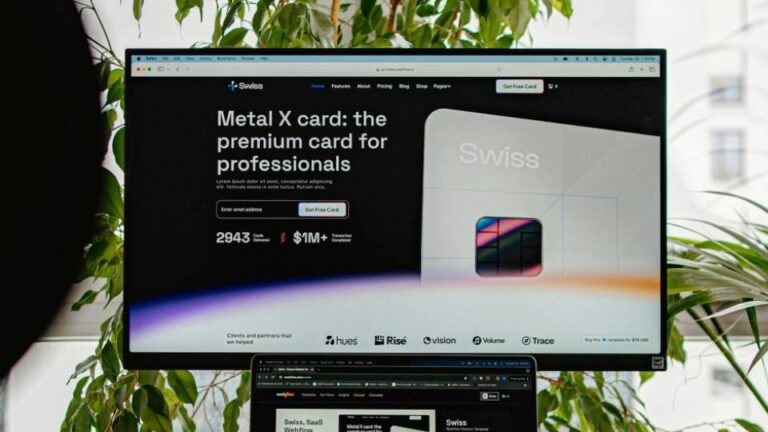If you’re asking yourself, “When should I redesign my business website?” — you’re not alone.
Your website is often the first impression your business makes. But just like fashion or tech, design trends, user expectations, and web standards evolve quickly. What looked great two or three years ago might now be doing more harm than good.
In this post, we’ll walk you through the clearest signs it’s time to redesign your website, how an outdated site can affect your bottom line, and what to expect from the redesign process. Whether you’re losing leads or just feeling like your site looks a little stale, this guide will help you figure out your next step.
1. Your Website Looks Outdated
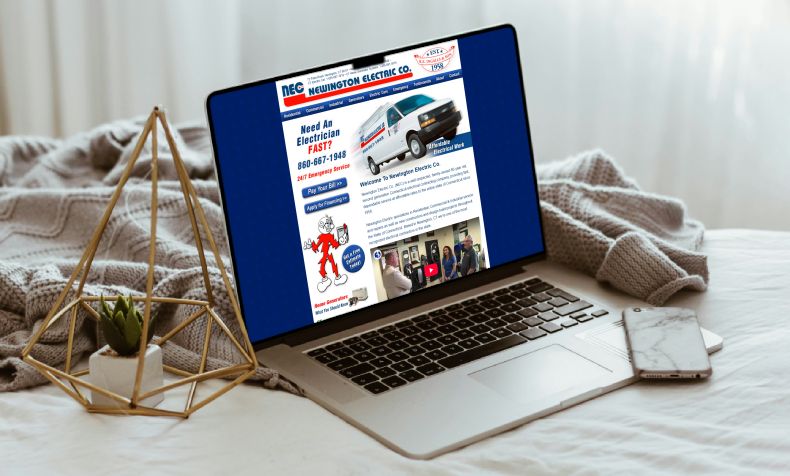
First impressions are everything. Research shows it takes just 0.05 seconds for users to form an opinion about your website, and outdated design can make you look unreliable or behind the times.
Signs your site looks outdated:
- Flashy or cluttered layouts from the early 2010s
- Non-mobile-friendly design (aka “pinch and zoom” layouts)
- Generic stock photography or low-resolution images
- Fonts and color schemes that don’t align with your current brand
Why it matters:
Your website is your digital storefront. If it looks old, potential customers may assume your products or services are outdated too, even if they aren’t. This can directly impact trust, engagement, and sales.
According to WebFX’s 2025 Statistics:
75% of consumers judge a company’s credibility based on its website design
Pro Tip: Compare your website side-by-side with your top three competitors. If their sites look cleaner, more modern, or easier to use, chances are your target audience thinks so too.
2. Your Website Isn’t Bringing in Leads or Conversions
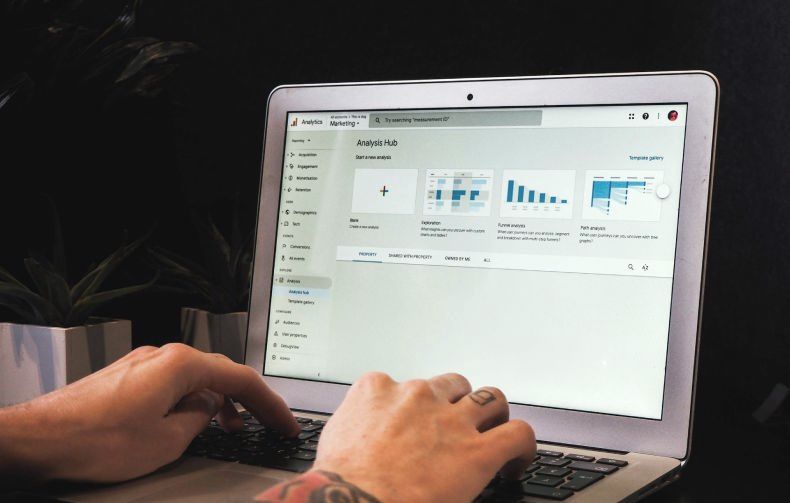
If your site looks fine but isn’t generating leads, appointments, or purchases, the issue might run deeper than design—it could be about user experience, structure, or trust.
Business owners often ask, “When should I redesign my business website if it still looks okay?” The answer: when it’s not performing.
Common red flags:
- High bounce rates
- Low time-on-page
- Minimal form submissions or calls
- Lack of engagement on key service pages
Why it matters:
A beautiful site that doesn’t convert is like a storefront with no salespeople. If users can’t find what they need, don’t trust what they see, or get lost navigating your pages, they’ll leave, often for your competitors.
Website design directly influences conversion by:
- Guiding users with visual hierarchy and intuitive navigation
- Building trust with testimonials, professional branding, and social proof
- Making CTAs easy to find and act on
3. It’s Not Mobile-Friendly or Fast
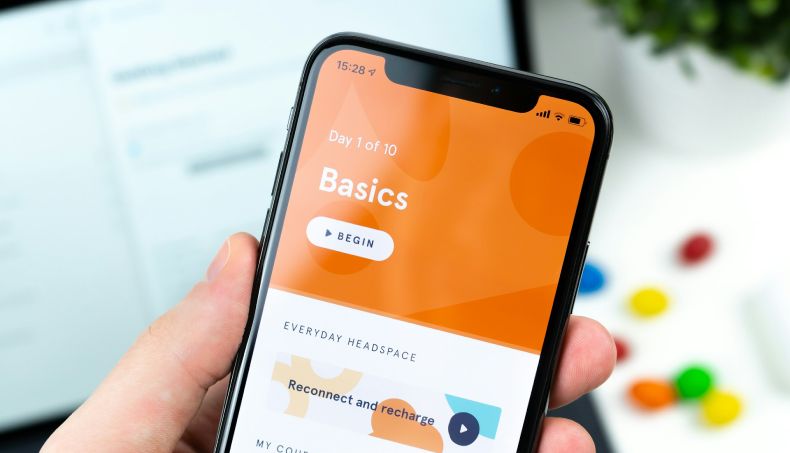
If your website doesn’t work well on mobile devices or takes too long to load, you’re losing visitors before they even get to your content. In fact, mobile usability and speed are now core ranking factors in Google’s algorithm.
This is one of the biggest signs it’s time to redesign your website, especially if you’re trying to compete in today’s mobile-first world.
Why mobile optimization matters:
- More than 60% of website traffic comes from mobile devices
- Google uses mobile-first indexing, meaning it evaluates the mobile version of your site first for search ranking
- A poor mobile experience creates frustration and bounce
Why speed matters:
- Sites that load in 5 seconds or more see a 90%+ bounce rate increase compared to sites that load in 1 second
- Slow-loading pages hurt SEO, conversions, and user satisfaction
- Tools like Google PageSpeed Insights and GTmetrix can help benchmark performance
Pro Tip: If your site was built more than a few years ago, there’s a good chance it’s not optimized for mobile performance or current speed standards. A redesign is often faster—and more effective—than trying to retrofit an old framework.
4. Your Branding or Business Has Changed
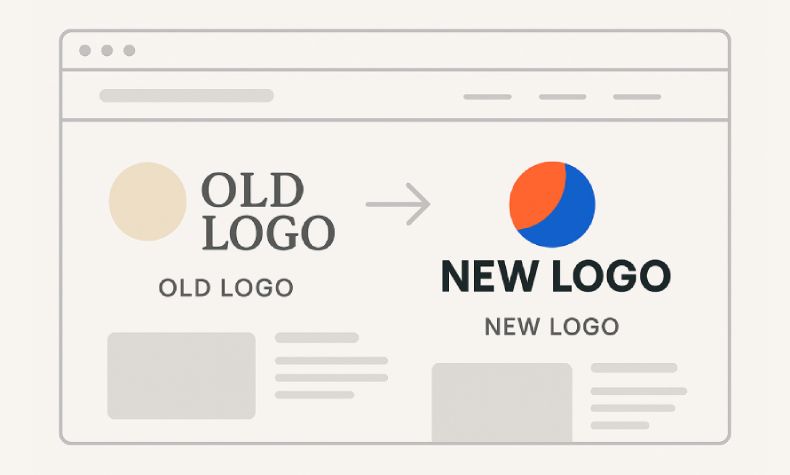
As your business grows, evolves, or pivots, your website needs to reflect those changes. If your site no longer matches your current branding, tone, or service offerings, it can cause confusion, or worse, make your business appear out of touch.
This is a common but overlooked answer to the question, “When should I redesign my business website?”
Reasons a redesign may be overdue:
- You’ve rebranded with a new logo, color palette, or messaging
- Your services or products have expanded or shifted
- Your business goals have changed—e.g. targeting new industries, offering new packages, or going more digital
- You’re incorporating new marketing strategies like SEO, paid ads, or content marketing
Why consistency matters:
- Your website is often the first stop for potential customers coming from ads, social media, or referrals
- Mismatched branding creates disconnect and undermines trust
- Updated messaging and structure help guide visitors toward conversion more effectively
Pro Tip: If your print materials, social media graphics, or in-store branding have evolved—but your website hasn’t, your visitors will feel that disconnect. Your website should be the hub that ties all your branding together.
5. You’re Falling Behind Competitors

Your competitors are investing in their online presence. If you’re not doing the same, you’re handing them the advantage, especially in an industry where first impressions and user experience can make or break a sale.
Keeping up with modern web design isn’t about following trends for the sake of it. It’s about meeting user expectations and positioning your business as credible, capable, and current.
Signs you’re falling behind:
- Competitors’ sites are faster, more mobile-friendly, or easier to navigate
- Their messaging is clearer and more engaging
- They offer better visuals, stronger calls-to-action, or helpful content
- Their rankings are climbing while yours are stagnant
Why this matters:
Even if your service is better, a competitor with a slick, modern site will often win the trust of a visitor faster. Your site needs to keep you in the game, not disqualify you before the first click.
Pro Tip: Don’t just redesign to “catch up” — redesign to leap ahead. A thoughtful redesign focused on performance, user experience, and brand clarity can position you as the standard others are trying to match.
How Often Should a Small Business Redesign Their Website?
There’s no one-size-fits-all answer, but for most businesses, a good rule of thumb is to redesign your website every 2 to 3 years. That’s typically how long it takes for design standards, search engine algorithms, and user expectations to evolve significantly.
If you’re wondering, “When should I redesign my business website if things seem to be working fine?”, the answer is: when data, goals, or the market say it’s time—not just when it “feels” like it.
Factors that influence timing:
- Major Google updates (Core Web Vitals, mobile-first indexing, etc.)
- Shifts in your industry’s design and UX standards
- Internal brand updates or changes in business direction
- Declining site performance (lower leads, slower speed, poor SEO)
- New technologies (chatbots, accessibility tools, video integration)
Why waiting too long can hurt:
- Technical debt builds up, making future updates harder
- You miss out on newer conversion strategies or SEO improvements
- Visitors get used to modern design elsewhere and expect the same from you
Instead of waiting until your site is clearly underperforming, plan for periodic redesigns as part of your long-term marketing strategy. That way, you’re evolving proactively, not reacting in crisis mode.
What to Expect from a Professional Website Redesign
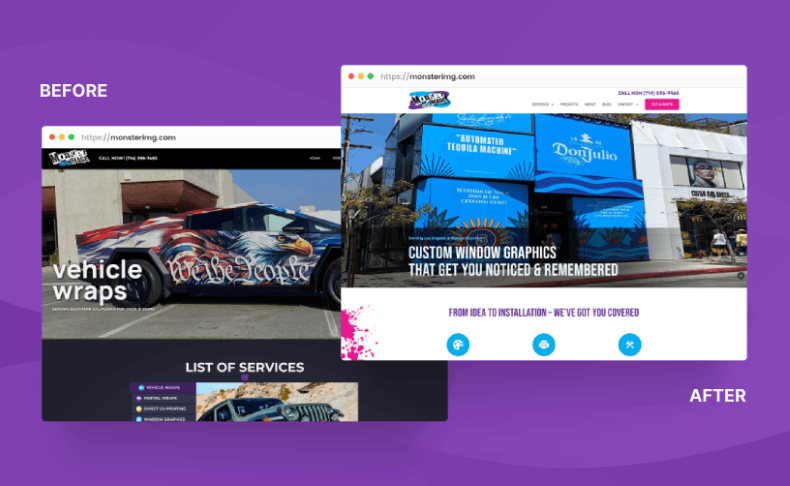
If you’re starting to recognize the signs that it’s time to redesign your website, the next step is understanding what that process actually looks like. A thoughtful redesign goes far beyond “making things look better” — it’s a strategic process aimed at improving performance across the board.
Here’s what you can expect when you work with a professional web design agency like Alliance Web Design.
The Website Redesign Process:
- Discovery & Strategy
We start by understanding your goals, customers, competitors, and analytics. What’s working? What’s not? What are your users trying to do? - Planning & Wireframing
Next, we create a structure that supports user journeys, conversion paths, and SEO performance. Wireframes allow us to map out your content and layout before designing anything visually. - Design
We craft a modern, mobile-friendly design that aligns with your brand and speaks to your ideal audience. This includes custom visuals, typography, and user interface (UI) elements. - Development
Our developers turn the design into a fast, responsive, SEO-optimized website using clean, scalable code. Everything is tested across devices and browsers. - Launch & Optimization
After internal QA and client review, we launch. But it doesn’t stop there — we monitor performance, gather feedback, and offer support for future updates.
Conclusion: Is It Time to Redesign Your Website?
If you’ve read this far and you’re still asking yourself, “When should I redesign my business website?” — the answer might already be clear.
Whether it’s an outdated look, poor performance, changing business goals, or falling behind competitors, there are many valid reasons to take the leap. Your website isn’t just a digital brochure, it’s your most valuable sales and marketing tool. And when it’s done right, it works for you 24/7.
At Alliance Web Design, we specialize in helping small and mid-sized businesses build websites that look great, perform even better, and align with real business goals. From the first conversation to post-launch optimization, we’re here to guide you through the entire redesign process.
Ready to take the next step?
Schedule a free consultation to find out how we can help you turn your outdated site into a powerful business asset.

